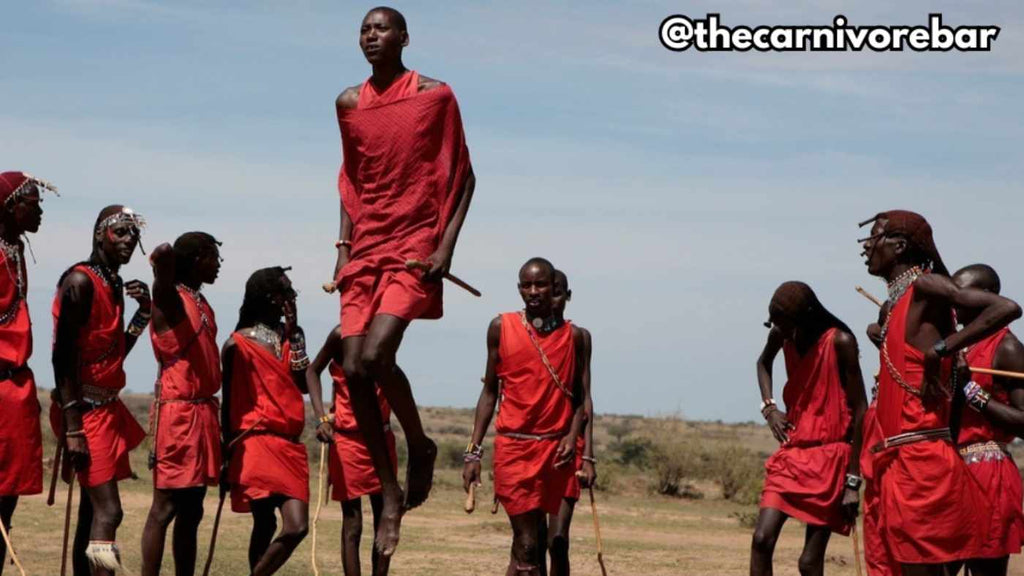Ever wondered why some populations tower over others? Spoiler: It’s not just genetics. Nutrition plays a massive role, and history proves it. Let's break it down 👇
🏇 Mongol Warriors: 6’4” Giants on an Animal-Rich Diet
Genghis Khan’s warriors weren’t just ruthless—they were TALL. The Mongols, averaging 6’4”, fueled themselves with wild-caught meat, dairy, and fermented horse milk (kumis). Their high-protein, high-fat diet gave them a serious advantage over grain-fed populations.

🍖 More Animal Protein = More Height

History shows a direct link between animal protein consumption and taller populations. When diets are rich in meat, dairy, eggs, and fish, people grow bigger, stronger, and healthier. Simple.

🌿 Animal Protein > Plant Protein
Not all protein is created equal!

- Animal protein is more bioavailable, meaning your body actually absorbs and uses it.
- Measured using DIAAS (Digestible Indispensable Amino Acid Score), animal proteins consistently outrank plant proteins in digestibility and amino acid profile.
🏜️ The Maasai: 6’3” & Thriving
The Maasai tribe of East Africa averages 6’3”, with some members surpassing 7 feet! Their diet? Meat, milk, and blood—a trifecta of highly bioavailable nutrients that support maximum growth.

🪶 Native Americans: The Original Tall Kings
In the early 1800s, the average Native American man was 4 inches taller than the average white settler. Why? Their traditional diet was heavy in wild game and fish, while European settlers relied more on bread and grains.

🦴 It’s Not Just Protein—It’s Nutrients Like D3 & K2
Height isn’t just about protein—it’s about bioavailable nutrients like:

- Vitamin D3 (bone density & growth)
- Vitamin K2 (calcium regulation & bone strength)
- Collagen & gelatin from animal sources (joint & bone support)
🌾 The Agricultural Revolution Shrunk Us
Once humans ditched hunting and embraced farming 12,000 years ago, heights dropped from 5’10” to 5’6” on average. Why? Diets became grain-heavy, lacking vital nutrients from animal foods.

🔥 The Takeaway
Want to maximize health, strength, and yes—height? Prioritize animal-based nutrition. Eat like your ancestors, not like a processed food company wants you to.
Citations:
-
Asanja Africa. "The Maasai in Africa: Their Culture, Diet, and Lifestyle." Asanja Africa, https://www.asanjaafrica.com/maasai/maasai-in-africa/. Accessed 2024.
-
Masson, V. M., and J. C. Smith. "Pastoral Economy and Food of the Mongols." Asia for Educators, Columbia University, https://afe.easia.columbia.edu/mongols/pastoral/masson_smith.pdf. Accessed 2024.
-
Hoppe, Camilla, et al. "Animal Protein Intake, Serum Insulin-Like Growth Factor I, and Growth in Healthy 2.5-Y-Old Danish Children." The American Journal of Clinical Nutrition, vol. 80, no. 2, 2004, pp. 447–452.
-
Mangano, Katherine M., et al. "Dietary Protein Is Associated with Musculoskeletal Health Independently of Dietary Pattern: The Framingham Third Generation Study." The American Journal of Clinical Nutrition, vol. 105, no. 3, 2017, pp. 714–722.
-
van Vliet, Stephan, et al. "The Skeletal Muscle Anabolic Response to Plant- versus Animal-Based Protein Consumption." The Journal of Nutrition, vol. 145, no. 9, 2015, pp. 1981–1991.
-
Lynch, Heidi M., et al. "Plant-Based Diets: Considerations for Environmental Impact, Protein Quality, and Exercise Performance." Nutrients, vol. 10, no. 12, 2018, p. 1841.

